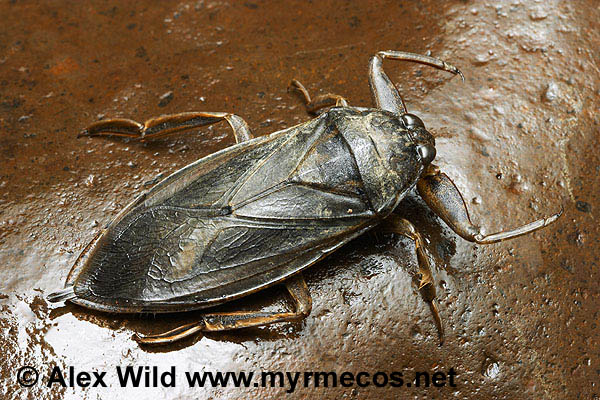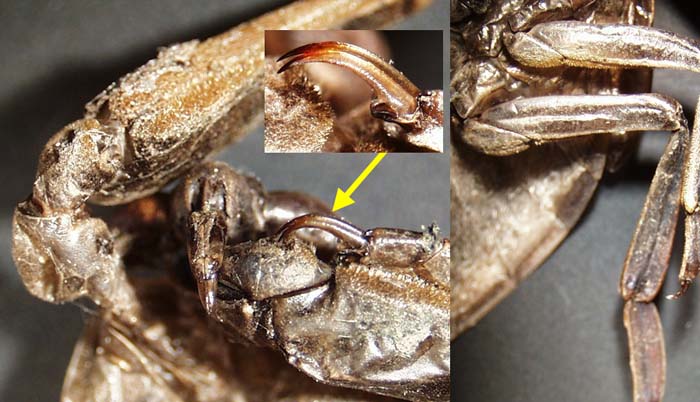
THE XERCES SOCIETY FOR INVERTEBRATE CONSERVATION Aquatic Invertebrates in Pacific Northwest Freshwater Wetlands |
| Identify taxa |
Belostomatidae (giant water bugs) |
Belostamatidae are some of the largest insects found in fresh waters. The three genera in North America are Lethocerus, Abedusand Belostoma. They are typically found in ponds, ditches, and stream pools among debris and vegetation or floating with their hind end at the water's surface, where they capture air in specially adapted straps at the end of their abdomen. Adults may also be attracted to lights some distance away from the water. Males of some species carry the eggs glued to their backs to protect those eggs from predation. Belostomatids prey on aquatic animals including insects, fish, and amphibians. Their aggressive habits earned them the nickname "toe biters", as they can inflict a painful bite. Giant water bugs have broad, oval, slightly flattened bodies; short antennae; and strong raptorial front legs. The hind legs have claws, and there are short straplike breathing appendages at the tip of the abdomen. The wingtips have numerous veins running through them. |
Size: large to xlarge |
Lethocerus: hind legs are more broad and flat than the middle legs; two claws
are present at the end of each raptorial front leg; body is elongate
and up to nearly 3". |
Belostoma: hind legs are similar to the middle legs; the raptorial front legs
have only a single claw at the end of each; body is oval and up to
only about 1.5" in length. |
 |
|
© 2007 Xerces Society
Contact info@xerces.org



